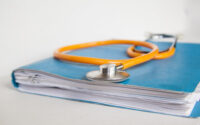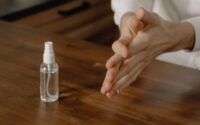Clinical Research Questions and Answers
Checking all the Clinical Research Questions and Answers Papers!! Later, check the Latest Clinical Research Associate Exam Questions and Answers. Clinical Research Coordinator Questions and Answers Papers pdf Free Download available here. Hence, candidates who are going to write exam may download Clinical Research Assistant Questions and Answers for free of cost. Aspirants can also get Clinical Research Questions and Answers Papers.

Clinical Research Nurse Questions and Answers Papers are uploaded here to help the candidates who are appearing for the Exam. The Applicants who are about to start their preparation for the Exam can refer to the Basic Clinical Research Questions and Answers papers. So, interested candidates can click on the direct links given below for downloading the Clinical Research Questions and Answers Papers along with Solutions or Answer Keys for freshers.
Questions and Answers on Clinical Research
1. Which of the following about active immunity is correct?
(a) No Lag phase
(b) Booster doses are useful
(c) Useful in immunodeficient people
(d) No memory cells
2. Superantigens causes
(a) Enhancement of phagocytosis
(b) Polyclonal activation of B cells
(c) Antigen presentation by macrophages
(d) Activation of complement
3. Which antibody crosses placenta?
(a) IgA
(b) IgG
(c) IgE
(d) IgM
4. Paul Bunnel test is example of
(a) Agglutination
(b) Precipitation
(c) Neutralization
(d) CFT
5. All are precipitation reactions except
(a) VDRL
(b) Kahn test
(c) Widal test
(d) Ascoli’s test
6. Which of the following act as Anaphylotoxin?
(a) C3a
(b) C3b
(c) C4b
(d) C2a
7. A positive tuberculin test is an example of
(a) Type I Hypersensitivity
(b) Type II Hypersensitivity
(c) Type III Hypersensitivity
(d) Type IV Hypersensitivity
8. Which one of the following cytokine induces fever?
(a) IL2
(b) IL1
(c) IL4
(d) IL5
9. Which Antibody mediates type 1 hypersensitivity reaction
(a) IgA
(b) IgG
(c) IgE
(d) IgM
10. Which Antibody is elevated in acute infection?
(a) IgA
(b) IgG
(c) IgE
(d) IgM
11. Which Antibody mediates mucosal immunity?
(a) IgA
(b) IgG
(c) IgE
(d) IgM
12. Prozone phenomenon is due to
(a) Excess antigen
(b) Excess antibody
(c) Hyperimmune reaction
(d) Both antigen & antibody excess
13. All the following are antigen presenting cells except
(a) T cells
(b) B cells
(c) Dendritic cells
(d) Macrophage
14. All the following are vaccines given at birth except
(a) BCG
(b) Hepatitis B
(c) DPT
(d) OPV
15. All the following are live attenuated vaccines except
(a) MMR
(b) Yellow Fever
(c) Salk polio
(d) Sabin polio
16. Grafts placed in anatomically abnormal sites are called as
(a) Orthotropic grafts
(b) Heterotrophic grafts
(c) Vital grafts
(d) Static grafts
17. Autoimmunity can be caused due to all of the following except
(a) The pressure of forbidden clones
(b) Expression of cryptic antigens
(c) Negative selection of T cells in the thymus
(d) Release of sequestered antigens
18. Cell type which lacks HLA Antigen is
(a) Monocytes
(b) Thrombocytes
(c) Neutrophil
(d) Red blood cells
19. Endotoxin acts by
(a) Classical pathway
(b) Lectin pathway
(c) Alternative pathway
(d) Both (a) & (b)
20. Overall immunity of a community towards a pathogen is called as
(a) Local immunity
(b) Herd immunity
(c) Adoptive immunity
(d) Adaptive immunity
| Interview Question | MCQs |
| Objective | Questions and Answers |
21. A cell without a cell wall is termed as
(a) Tonoplast
(b) Protoplast
(c) Symplast
(d) Apoplast
22. The oxygen and carbon dioxide crosses the plasma membrane by the process of
(a) Active diffusion
(b) Facilitated diffusion
(c) Passive difusion
(d) Random diffusion
23. Which of the following cell organelle is involved in the breakdown of organic matter
(a) Lysosomes
(b) Cytoplasm
(c) Golgi bodies
(d) Mitochondria
24. Which of the following is involved in the storage of food, other nutrients, required for a cell to survive
(a) Vacuoles
(b) Lysosome
(c) Mitochondria
(d) Cell membrane
25. Which of the following is responsible for transporting, modifying and packaging proteins and lipids
(a) Mitochondria
(b) Endoplasmic reticulum
(c) Golgi Complex
(d) DNA
26. RNA is present in which of the following cell organelle
(a) Cell wall
(b) Ribosome
(c) Nucleus
(d) Cell membrane
27. Which of the following cells release insulin when glucose levels elevate in the body
(a) Gamma cells
(b) Beta cells
(c) Alpha cells
(d) Zeta cells
28. Sodium and Potassium pumps are examples of
(a) Plasmolysis
(b) Active transport
(c) Passive transport
(d) Osmosis
29. Gap junctions are absent in which type of cells
(a) Sperm cells
(b) Brain cells
(c) Reproductive cells
(d) Cardiac cells
30. Which of the following are phagocytic cells
(a) Neutrophils, mast cells
(b) Mast cells, macrophages
(c) Mast cells, antibodies
(d) Neutrophils, macrophages
31. Which of the following is known as powerhouse of the cell?
(a) Mitochondria
(b) Cytoplasm
(c) Lysosome
(d) Nuclei
32. Which of the following is known as suicide bag of a cell?
(a) Mitochondria
(b) Golgi complex
(c) Lysosome
(d) Nuclei
33. Which part of a neuron receives information from other neurons?
(a) Cell body
(b) Axon
(c) Dendrites
(d) Myelin sheath
34. DNA is stored in which of the following cell organelle?
(a) Cell wall
(b) Cell membrane
(c) Nucleus
(d) Cytoplasm
35. Which of the following doesn’t have a cell?
(a) Virus
(b) Bacteria
(c) Fungi
(d) Algae
36. Acid fastness of M. tuberculosis is due to
(a) Peptidoglycan layer
(b) Arabinoglycan layer
(c) Mycolic acid layer
(d) Lipoarabinomannan
37. Elephantiasis is caused by
(a) Wucherei bancrofti
(b) Ascaris limbricoides
(c) Enterobius vermicularis
(d) Fasciola hepatica
38. Which of the following site is most commonly affected by diphtheria
(a) Skin
(b) Conjunctiva
(c) Faucial
(d) Kidney
39. Plaque is transmitted by
(a) Rat flea
(b) Soft tick
(c) Hard tick
(d) Louse
40. The causative agent of Syphilis is
(a) Entamoeba histolytica
(b) Neisseria gonorrhoea
(c) Plasmodium
(d) Treponema pallidum
41. Hand-foot-and -mouth disease is caused by
(a) HSV
(b) Coxsakie virus
(c) Measles
(d) Chicken pox
42. A Tzank smear of a scrapping obtained from a vesicle on the skin demonstrates multinucleate giant cells. Which of the following is associated with such findings
(a) HSV-1
(b) Variola major
(c) Coxackie virus
(d) Molluscum contagiosa
43. The correct sequence of manifestation seen in measles is
(a) Fever – Koplik’s spot- rash
(b) Koplik’s spot – fever – rash
(c) Rash – fever – Koplok’s spot
(d) Rush – Koplik’s spot – fever
44. During window period of patient with AIDS, best diagnostic test is
(a) ELISA
(b) Western blot
(c) Rapid test
(d) RT-PCR
45. What does ’19’ in Covid – 19 refer to
(a) There are 19 variants of the coronavirus
(b) There are 19 symptoms of coronavirus disease
(c) This is the 19 coronavirus pandemic
(d) The coronavirus and disease were identified in 2019
46. Most common fungus causing secondary infection in severe Covid-19 patients
(a) Mucor
(b) Apergillilus
(c) Candida
(d) Cryptococcus
47. What is the infective form of malaria parasite
(a) Oocyst
(b) Sporozoite
(c) Bradtzoite
(d) Tachyzoite
48. Germ tube test is a diagnostic test for
(a) Candida glabrata
(b) Candida albicans
(c) Cryptococcus neoformans
(d) Coccidioidesimmitis
49. All of the following are oncogenic RNA viruses except
(a) HTLV I
(b) HIV
(c) Hepatitis B
(d) Hepatitis C
50. Best indicator of HIV prognosis
(a) CD4T cell count
(b) CD8 T cell count
(c) HIV RNA
(d) ELISA



